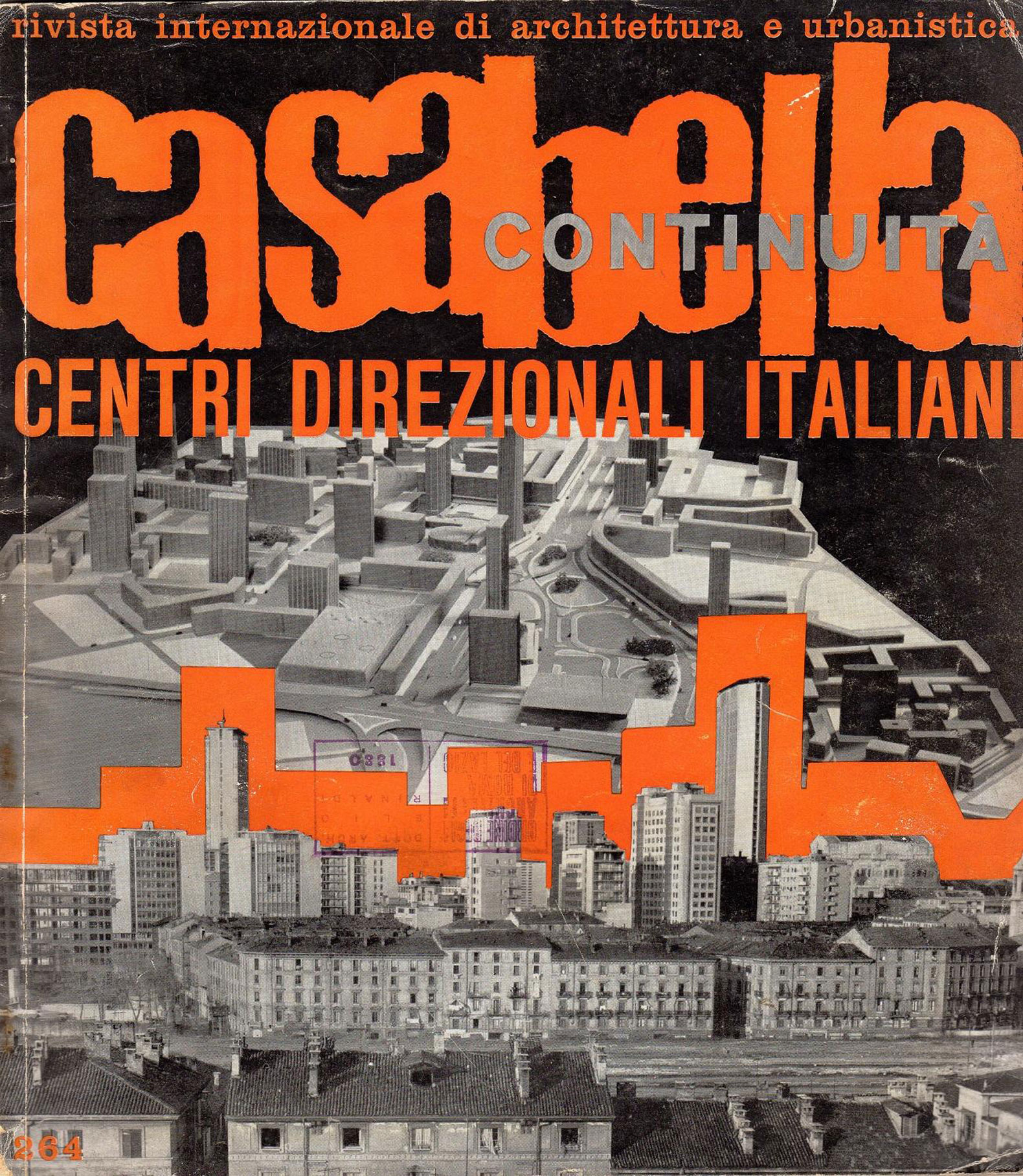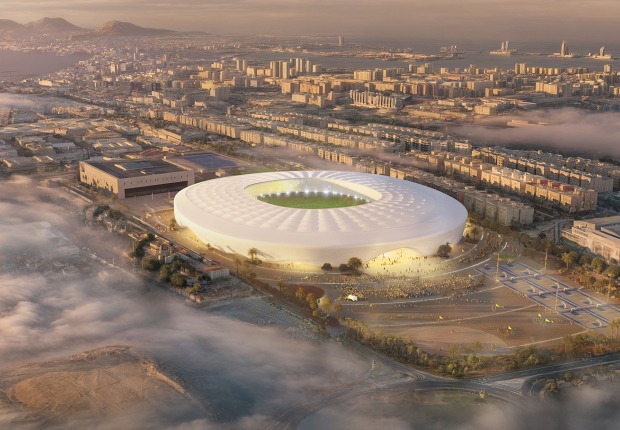Vittorio Gregotti, with more than 60 years of professional practice, founded Gregotti Associati International in 1974. He is currently working with other partners, Augusto Cagnardi and Michele Reginaldi. During his brilliant career, he was director of the prestigious magazine Casabella between 1981 and 1996.

Italian edition, Casabella Magazine nº264.
Among his extensive editorial production, one of his most representative books is, "Il Territorio dell'Architettura", compared (to such) important books of his time as, " La Architettura della Cittá" by Aldo Rossi or "Il significato della cittá" by Carlo Aymonino.
Among his extensive editorial production, one of his most representative books is, "Il Territorio dell'Architettura", compared (to such) important books of his time as, " La Architettura della Cittá" by Aldo Rossi or "Il significato della cittá" by Carlo Aymonino.
"The form of matter ordered in accordance with habitat" (1)
Vittorio Gregotti
In fact, the habitat is defined by Gregotti as the territory of architecture, which is that physical component of the city that is part of a complex system, rooted in a habitat. The possible interventions in a habitat would be geographical, topographical or direct on architectural objects. However, the structuring of the habitat through the project, according to the architect, requires, in addition to an artistic and creative vision, the integration of the concept of nature and environment, as an attached value.
In the field of architecture, his projects are characterized by the use of a rationalist style. Order, symmetry and repetition would constitute the "modus operandi" of his studio. Moreover, Gregotti's compositional conceptualism tends to seek a possible dialogue between geography and architectural form, with a historical vision.
First proyects
During his career, Gregotti was successful on important international stages. He won the international Grand Prix for the introductory section of the XIII Triennale (Milan 1964) and during the following ten years, he developed projects for some Italian universities, such as those of Florence, Calabria and Palermo.
International Repercussion
In 1980, he participated in the IBA international exhibition in Berlin, to reconstruct the western part of the German city. In addition, he left his mark in Portugal, with the realization of the Cultural Center of Belém, in Lisbon.

Belém Cultural Centre (1992) by Gregotti Associati International, photograph by João Carvalho, 2011.
Trajectory in Iberian territory
The project in the Portuguese city was realized in 1992. It was initially thought as the seat of the President of the European Union in Portugal. Subsequently, it became an important and dynamic center for cultural activities. The structure was considered as an urban project, for its three modules: the meeting center, the representations center and the exhibition center, which consists of 4 galleries, a Design Museum and the Berardo Museum. For its gardens and terraces, it represents one of the biggest modern icons of the city.
That same year, on the occasion of the celebration of the Olympic Games in Barcelona, he participated in the restoration of the Olympic Stadium in Barcelona, commissioned by the architect Correa-Milá-Margarit-Buixadé.

Olympic Stadium Lluís Companys (1992) by Correa-Milá-Margarit-Buixadé Architects and Gregotti Associati International. Photograph by Diliff, 2007.
The project preserves the image of the original stadium, with a rehabilitation made to host the Olympic Games in Barcelona, increasing its capacity to 60,000 spectators. In addition, the functional aspect was improved with the incorporation of more exits and more services. The project won several prizes, such as the international competition for Barcelona's Olympic ring and the Prize for the Promotion of Decorative Arts (FAD) for the rehabilitation of the Olympic Stadium of Montjuïc.
A new historic center in the Milan's periphery
In Italy, he developed one of the main proposals of his time, the project for the Bicocca area in Milan. This urban-scale project, described by Gregotti as "a long-term project" (2), transformed the old Pirelli industrial estate into a new Integrated and Multifunctional Technology Centre. His main strategy focused on a meticulous analysis of the urban spaces of the existing factory, proposing a design that connected it with the historical plot. It was considered one of the largest urban regeneration projects in Europe, such as the Vila Olímpica or the Canary Wharf in the Docklands in London. This large intervention (700,000 square metres) generated an identity of its own, configuring itself as an autonomous district and as a new zone of centrality on the periphery.
"It is essential that the periphery can count on the same elements with which the city is made up, for example multifunctionality, which prevents isolation, especially the social mix is important, because the peripheries are often mono-class, monofunctional and do not encourage the encounter, transformation or at least the hope of transformation." (3)
Vittorio Gregotti, in an interview by Giampaolo Atzeni.

Project's Masterplan for Bicocca's requalification by Gregotti Associati International.
The university complex, where the well-known Bicocca University is located, built with materials from the old Pirelli Pneumatici buildings, is the central axis of the old industrial zone. The project introduces an artificial hill that becomes an important green lung for the district.
Another of Gregotti's relevant projects is the "Teatro degli Arcimboldi" ,considered one of his most important Italian works.

Arcimboldi Theatre on 2002 by Gregotti Associati International.
The building has an area of more than 18,000 square metres and can hold up to 2,400 spectators. The materials used are reinforced concrete and a light-coloured plaster that contrasts with a black granite base. The project consists of simple lines, which make up a three-volume architectural complex, characterised by a 40 m high observation tower, a two-storey lobby with two rows of galleries and an inclined curtain wall overlooking the square.
NOTES.-
(1) Gregotti, Vittorio. Il Territorio dell'Architettura. Barcelona: Gustavo Gili, 1972, p. 29.
(2) Fulvio Irace. Il principio etico della Bicocca. Domus, 16.10.2010. Milan: Editoriale Domus Spa,2010. (Acceso.-25.05.2019: https://www.domusweb.it/it/architettura/2010/10/16/il-principio-etico-de...).
(3) Giampaolo Atzeni. Vittorio Gregotti. Le sfide dell'Architetto. Arte in, nº. 113, february-march. Viareggio: Sunshine S.r.l.s., 2008.






























